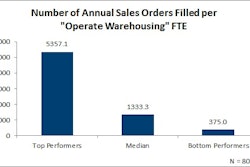
Generally accepted accounting principles (GAAP) in the United States require businesses to evaluate if reserves are necessary to their balance sheet and income statement. Often times, business owners are probably thinking, “That’s great, but why should I care?”
When the time comes for business owners to take out a loan, they should definitely care. For example, perhaps you want to purchase a warehouse for your current and future inventory, and unless you have $100,000 to $200,000 cash on hand, you need to reach out to your bank for assistance. Nine times out of 10, the bank is going to require some type of financial report (such as an audit, review or compilation) be provided and verified by a third party. Therefore, after securing a loan, consumer goods manufactures and/or suppliers need to make sure that they evaluated the true cost of their inventory and are aware of the accounting rules behind it.
Old, Spoiled or Obsolete Inventory
To value inventory at its true cost, a company needs to take into consideration inventory that never leaves the shelf. Examples of such inventory include:
- Old items (i.e. clothing that is out of style, furniture that no longer has a purpose, etc.).
- Spoiled items (i.e. expired bread, rotten vegetables or fruit, melted ice cream, etc.).
- Obsolete items (i.e. floppy disks, flip phones, 10-key calculators—yes, they still exist!).
A company has to consider any items that are no longer selling or can no longer be sold due to the decline in quality. With GAAP, companies are allowed to forecast these potential spoilages and set aside a cushion so that the company, and more importantly, the balance sheet/income statement do not have to take the loss all at once. In fact, companies are required to evaluate if their products and estimated cushion are necessary and appropriate at a minimum of every financial reporting period.
The pros of this approach include:
- Helping companies spread out their expenses over time and not taking the hit all at once.
- Forcing companies to evaluate periodically what inventory they have on hand at any given time.
- Freeing up warehouse space for unsellable inventory so that new inventory can be purchased and sold.
In contrast, the cons of this approach include:
- Overestimating the amount of the reserve, taking a bigger hit in one year than planned and showing a worse financial position (i.e. a company is not making as much money as it should be).
- Forcing companies to spend time in an area that may not be a top priority for their business.
For tax purposes, expect the unexpected! These cushions/estimates required for GAAP are not allowed on tax returns until the spoilage/closure of a product line, or whatever the event may be, actually happens. The business has to take the expense in the year that it happens. For example, if there is widespread disease in the tomato family, all the rotten tomatoes have to be written off immediately. The company cannot push this loss to another year and may have an unexpected outcome in that period.
Examples of ways to help soften the blow include:
- Maintaining good relations with vendors so that other vendors can help out if one vendor has too many rotten tomatoes.
- Looking into purchasing business interruption insurance so that, if such unexpected events happen, the owner and business are prepared and do not take as big of a financial hit.
How Reserves Affect the Numbers
When it comes to the balance sheet, an increase to reserves decreases both inventory and assets. On the other hand, a decrease to reserves increases both inventory and assets.
In regard to the income statement, an increase to reserves increases the cost of goods sold, decreases the gross profit and decreases the net income. However, a decrease to reserves decreases the cost of goods sold, increases the gross profit and increases the net income.
If no reserves are recorded, then inventory could be potentially overstated as it is not being valued at the lower of cost or net realizable value for GAAP purposes.
The Conservative Approach
It is easy for companies to lose track of their inventory which, in turn, causes an increase to the reserves to account for obsolete, stolen or spoiled inventory. Therefore, proper controls and oversight helps prevent unnecessary write-offs.
Here are some key factors and proper controls to consider around inventory processes:
- Physical and/or inventory counts should be performed as often as possible (best practice specifies a minimum of once a quarter). When performing the counts, it is important to consider freezing the inventory so that no items are leaving or entering the warehouse; reconciling any discrepancies between the inventory system and the physical count; being on the lookout for any old, spoiled or obsolete inventory; and establishing a minimum of two workers to perform these counts for extra oversight.
- The inventory department should reconcile the listing to the accounting records at least once a month, and adjust or write off any discrepancies.
- The warehouse inventory manager should be in constant communication with the warehouse workers and the accounting department to immediately recognize when there are discrepancies.
- Building good relationships with suppliers and vendors can help negate any unforeseen issues and help with communication when there may be discrepancies.
Specific ways to account for inventory reserves are as follows:
- Based on historical experience, as a percentage of cost of sales. For example, if every year, a company writes off $10,000 worth of inventory, then the company’s reserve at year end should be equal to at least $10,000.
- Based on a certain percentage of inventory compared with the cost of goods sold. For example, if management decides that, in one year, 5 percent of inventory is either going to spoil, become obsolete or be stolen, then the company would accrue for 5 percent of the inventory value as a reserve.
In conclusion, it is crucial to account for reserves as conservatively as possible so that companies can foresee any potential issues with damaged, obsolete, spoiled or stolen inventory, and incur those expenses over a period of time rather than all at once when these instances become specifically identifiable. If these measures are not followed, then companies are setting themselves up for lawsuits or fraudulent reporting, which is a big can of worms that definitely doesn’t need to be opened.









